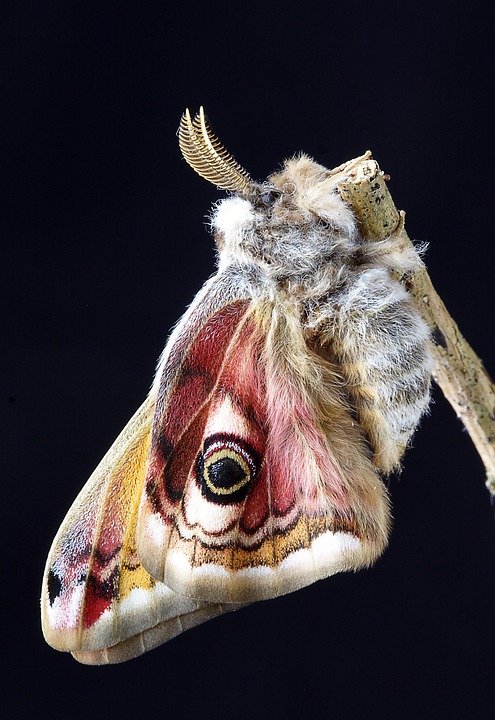Metamorphosis in Nature: How Animals Transform and Adapt
Nature has always been a source of wonder and fascination for humans. From the majestic mountains to the serene oceans, there is always something incredible to discover. One of the most intriguing phenomena in nature is metamorphosis – a process through which animals undergo a remarkable transformation, adapting to the ever-changing world around them. In this article, we will explore the concept of metamorphosis, how it occurs in different species, and the reasons behind this awe-inspiring adaptation.
What is Metamorphosis?
Metamorphosis, in its simplest terms, refers to a transformation that animals undergo during their life cycle. It involves a series of structural changes that allow the animals to transition from one life stage to another, resulting in a completely different form. This process is not limited to a specific group of animals but is observed in various species across the animal kingdom.
Types of Metamorphosis
There are two primary types of metamorphosis: complete and incomplete. Let’s delve into each type and understand how they differ.
1. Complete Metamorphosis:
Complete metamorphosis is characterized by four distinct stages: egg, larva, pupa, and adult. This type of metamorphosis is commonly observed in insects, such as butterflies, moths, beetles, and flies. The process begins with the hatching of an egg, which gives rise to a larva. The larva, often referred to as a caterpillar, undergoes a period of rapid growth, feeding voraciously to accumulate energy. Once the larva has reached its full size, it enters the pupal stage. Inside the pupa, the larva undergoes a complete reorganization of its tissues, and after a period of time, it emerges as an adult. This final stage is the most recognizable, as the adult insect displays its characteristic features, such as wings, which were absent during the larval stage.
2. Incomplete Metamorphosis:
Incomplete metamorphosis, as the name suggests, involves a less dramatic transformation compared to complete metamorphosis. This type of metamorphosis is commonly observed in insects like grasshoppers, crickets, and dragonflies. The process consists of three stages: egg, nymph, and adult. After hatching from the egg, the nymph resembles a miniature version of the adult, with similar body structures. However, it lacks reproductive organs and wings, which develop and become functional during subsequent molts. Over several nymphal stages, the insect gradually matures, molting and growing until it reaches adulthood.
Reasons for Metamorphosis
Metamorphosis serves several purposes for animals, allowing them to adapt and survive in their respective environments. Here are some of the reasons behind this remarkable transformation:
1. Resource Utilization:
By having distinct life stages, animals can exploit different resources available at each stage. For example, caterpillars consume large amounts of leaves, while adult butterflies feed on nectar. This division of resources ensures efficient utilization and minimizes competition within the same species.
2. Predator Avoidance:
Metamorphosis can serve as a survival strategy by allowing animals to avoid predators. Insects in the larval stage, such as caterpillars, adopt various defense mechanisms, such as camouflage or toxic chemicals, to deter potential predators. Once they transform into adults, they often possess different means of defense, such as flight or venom.
3. Niche Adaptation:
Metamorphosis enables animals to occupy different ecological niches throughout their life cycle. By changing their body structures, feeding habits, or habitats, animals can exploit unique niches and reduce competition with others of the same species. This adaptation enhances their chances of survival and ensures the species’ overall ecological success.
FAQs
Q: Why do some animals undergo metamorphosis while others do not?
A: Metamorphosis is primarily observed in animals that undergo a significant change in their lifestyle or habitat during their life cycle. It provides them with a means to adapt to their specific environmental demands.
Q: How long does metamorphosis take in different species?
A: The duration of metamorphosis varies among different species and environmental conditions. Some insects, like butterflies, may complete their metamorphosis within a few weeks, while others, like cicadas, may take several years.
Q: Are all stages of metamorphosis vulnerable to predation?
A: Yes, each stage of metamorphosis presents unique challenges and vulnerabilities. Predators can target eggs, larvae, pupae, or even adults, depending on the species and their respective ecological interactions.
Q: Can metamorphosis occur in non-insect animals?
A: Yes, metamorphosis is not exclusive to insects. It is observed in various animal groups, including amphibians (from tadpoles to frogs), crustaceans (from larvae to adults), and even some fish (such as the anglerfish).
In conclusion, metamorphosis in nature is a remarkable process that allows animals to adapt and survive in their ever-changing environments. Whether it is the complete transformation of butterflies or the gradual growth of grasshoppers, this phenomenon showcases the incredible diversity and resilience of the animal kingdom. By understanding the reasons behind metamorphosis, we gain a deeper appreciation for the strategies animals employ to navigate their complex lives and secure their place in the natural world.


